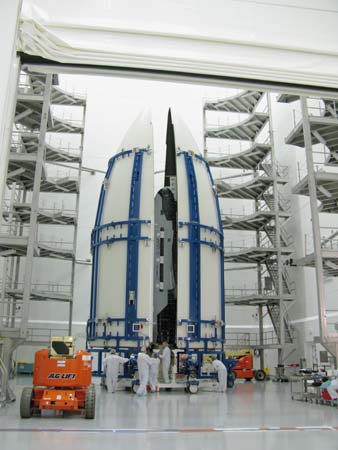The  Air Force and its industry partners last week launched the second Boeing-built X-37B orbital test vehicle, OTV-2, into space on its inaugural mission. The reusable spaceplane lifted off from Cape Canaveral AFS, Fla., aboard a United Launch Alliance Atlas V rocket destined for a low-Earth orbit. “We have just started what is a very systematic checkout of the system,” said Richard McKinney, USAF’s deputy under secretary for space programs, following the March 5 launch. McKinney said OTV-2’s flight will expand upon the orbital tests conducted with OTV-1 during its maiden mission last year. Air Force officials said OTV-2 likely will remain on orbit for about 270 days, perhaps longer. Program officials want to land OTV-2 in stronger wind conditions than OTV-1 faced when it returned to Earth. (Cape Canaveral report by MSgt. Amaani Lyle) (See also Boeing release)
Air Force and its industry partners last week launched the second Boeing-built X-37B orbital test vehicle, OTV-2, into space on its inaugural mission. The reusable spaceplane lifted off from Cape Canaveral AFS, Fla., aboard a United Launch Alliance Atlas V rocket destined for a low-Earth orbit. “We have just started what is a very systematic checkout of the system,” said Richard McKinney, USAF’s deputy under secretary for space programs, following the March 5 launch. McKinney said OTV-2’s flight will expand upon the orbital tests conducted with OTV-1 during its maiden mission last year. Air Force officials said OTV-2 likely will remain on orbit for about 270 days, perhaps longer. Program officials want to land OTV-2 in stronger wind conditions than OTV-1 faced when it returned to Earth. (Cape Canaveral report by MSgt. Amaani Lyle) (See also Boeing release)
The Space Development Agency says it’s on track to issue its next batch of missile warning and tracking satellite contracts this month after those awards were delayed by the Pentagon’s decision to divert funds from the agency to pay troops during this fall’s prolonged government shutdown.

